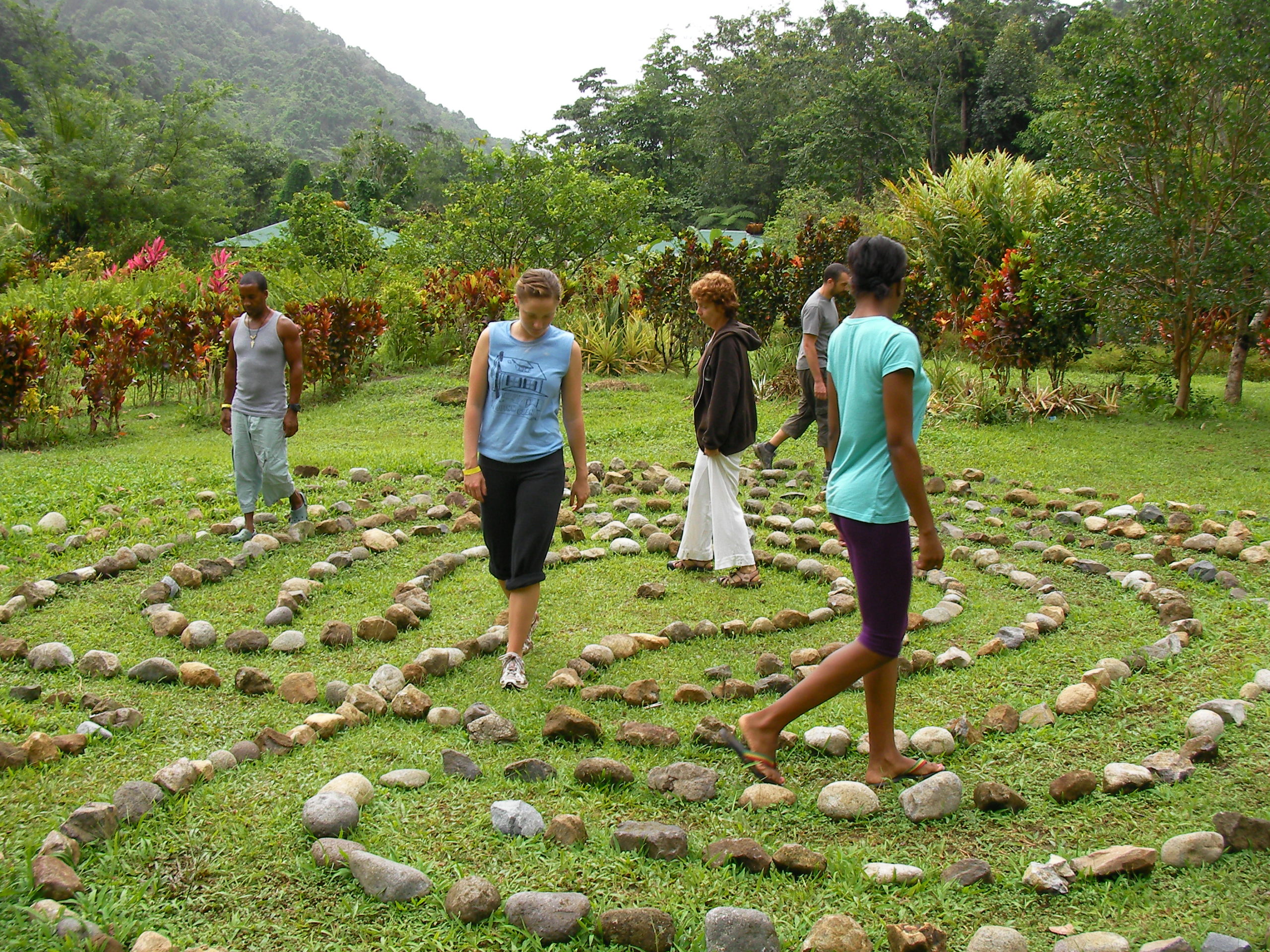Four Yogas in the Life of Church

My parish church has a spiritual center in which we host contemplative workshops, retreats, and spiritual direction—anything from guided labyrinth walks to Stephen Ministry. One of the first decisions we made as we planned the center was that it would emphasize hands-on, experiential activities directly related to contemplative practice. What it would not feature was the dispensing of information through books or lectures, as these things were already lavishly provided for in the Parish Forum, the rector’s book group, and weekday bible study.
While we thought this was a straightforward distinction that could be easily agreed upon, there were—because it’s church—the inevitable misunderstandings and hurt feelings, as some people wanted to present programs that we thought were outside the scope of the center.
Sometimes issues need to be reframed, and it can often be helpful to look outside one’s own tradition for a framework. So for those who may be struggling with similar misunderstandings in their congregations, I offer the Four Yogas as a lens through which to see things differently.
The Sanskrit word “yoga” literally means “yoke”; yoga, in other words, is any practice done for the purpose of uniting the soul with—or “yoking” it to—the divine. Looking back over the proliferation of yogic practices that had developed in India over the millennia, Swami Vivekananda—the monk who introduced America to Hinduism in the 1893 World Parliament of Religions at the Chicago World’s Fair—gave a series of lectures on what he had come to call the Four Yogas. Briefly, they are:
Karma Yoga. “Karma” means “actions,” and karma yoga is the purification of action—ie., work–through selfless service. In our parish, karma yogic activities include canvassing for a living wage with a local social action agency, taking communion to the sick as Eucharistic Visitors, and cooking and serving biweekly parish suppers.
Bhakti Yoga. “Bhakti,” or “devotion,” is expressed through the worship of the church; bhakti yoga constitutes the purification of the emotions through devotional practices. (Note: These are not airtight categories, and participation in religious rituals also falls under the heading of karma yoga. Some may argue that the emotional “praise and worship” of evangelical congregations has more in common with bhakti yoga than the “dignified and seemly” worship of the Episcopal Church, and they may have a point. But liturgy—especially the powerful liturgies of Holy Week—can have much more emotional depth than may appear to the untrained eye.)
Jnana Yoga, (pronounced “nyana”), or the yoga of knowledge, is the purification of the intellect through study—especially, but not exclusively, the study of sacred texts. The church practices jnana yoga through preaching, bible study, and Christian education.
Raja Yoga is the yoga of meditation. Hatha yoga—the practice of physical postures or asanas that is what most Americans think of as “yoga,” is actually a subset of raja yoga practice, as it is designed to allow the body to be comfortably still in meditation. (For many, it is also a meditative practice in itself.) In our parish, raja yoga is expressed through the activities of our spiritual center, and include daily morning meditation, contemplative workshops and retreats. (A group that has been around much longer than Wellspring also practices monthly African Bible Study, a contemplative group approach to the scriptures.)
Framed in this way, the ministries of the church may be enabled to maintain their integrity without seeming to be in competition with each other. Moreover, just as each individual generally favors one or two of these yogas, all four require some degree of expression in each person’s spiritual life. Certainly no one would single out a quarter of their muscles to remain undeveloped, or clip a quarter of a bird’s wing feathers and expect it to fly.
Perhaps this is one reason that community is so vitally important to spiritual growth: People with different strengths support and challenge each other, and the community as a whole is blessed with the fruits of all the different kinds of spiritual practice. Where there is an imbalance in the community, needs will go unmet, and imbalance within individuals will go undiagnosed and unaddressed.
While it seems that all four should find equal expression in the life of the church as a whole, many churches shortchange the contemplative aspect of raja yoga, even in denominations that are not hostile to contemplative practice. It is the relative underdevelopment of contemplative spirituality that spiritual centers like Wellspring are designed to address. Moreover, I suspect that those congregations that offer a balance of service, worship, teaching and contemplation are the ones that thrive, while those that neglect to balance these four areas may experience decline.
i. Perhaps someone may eventually find a correlation between the yoga or yogas people favor and their Meyers Briggs personality types.
